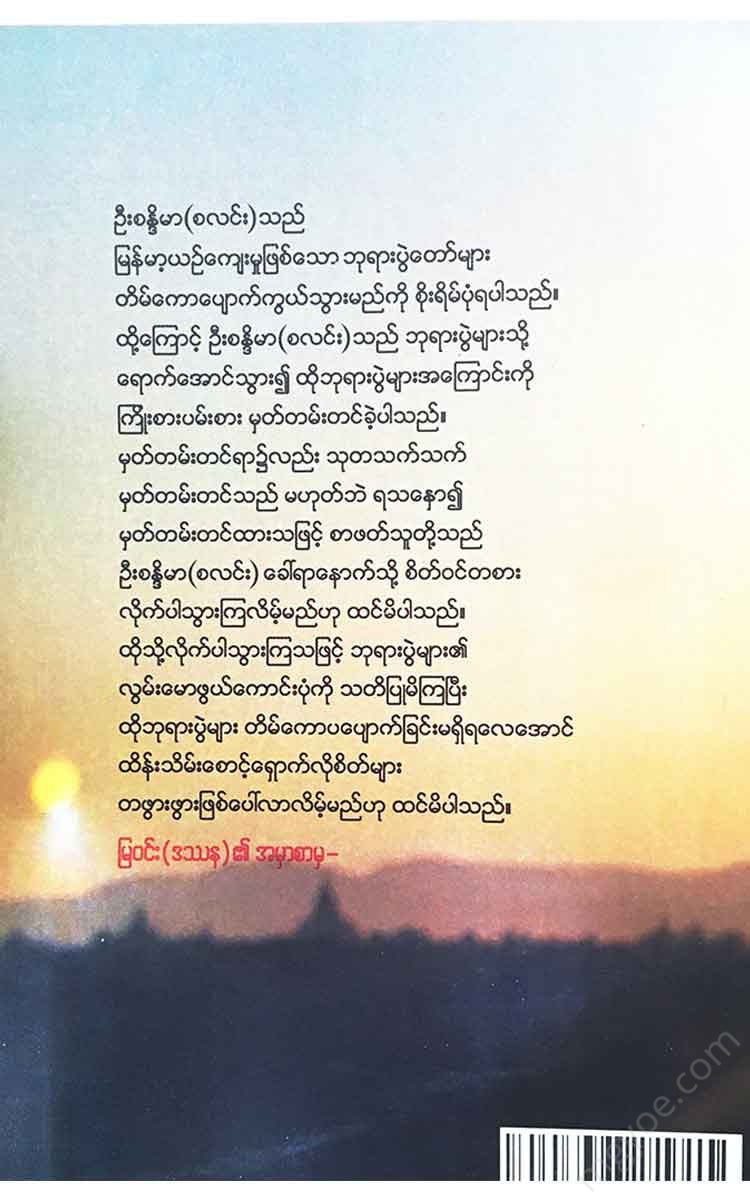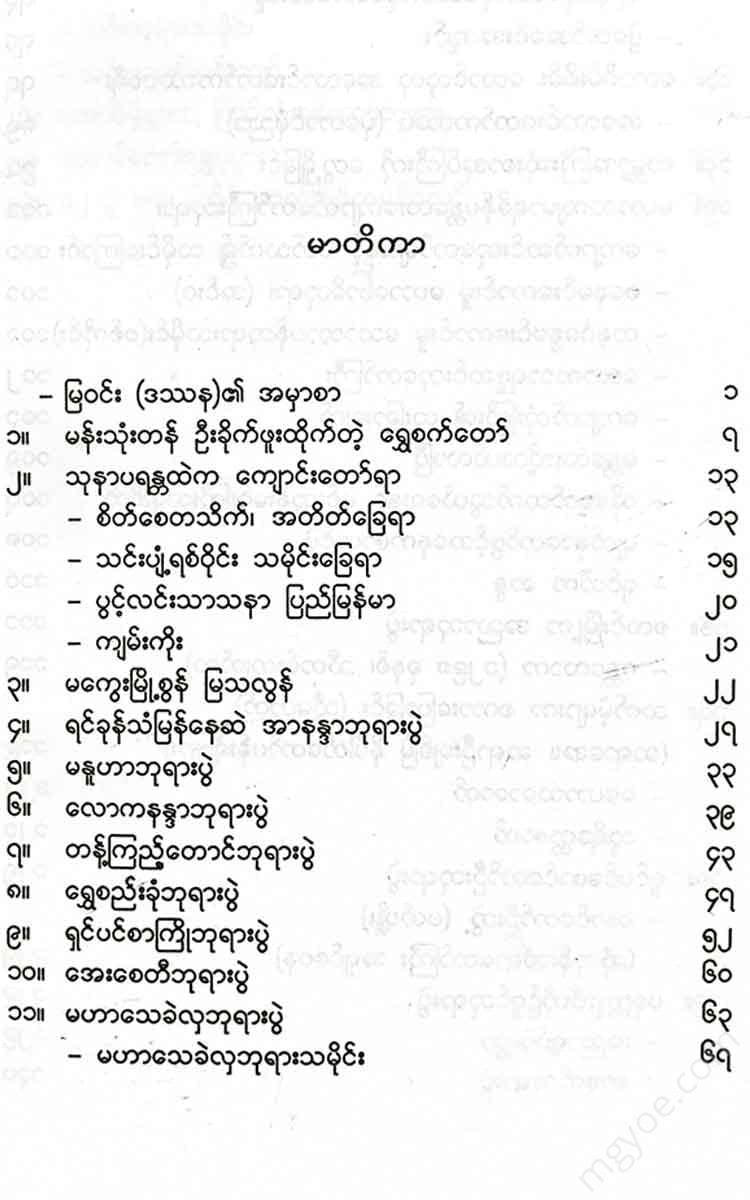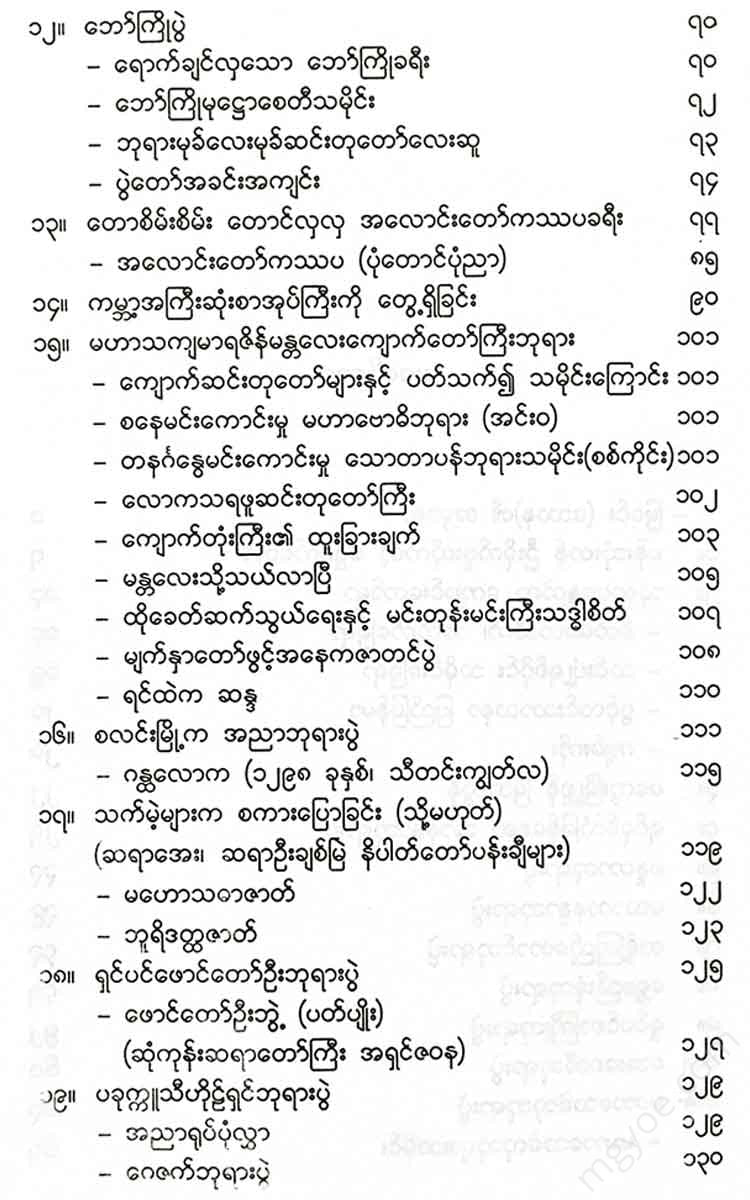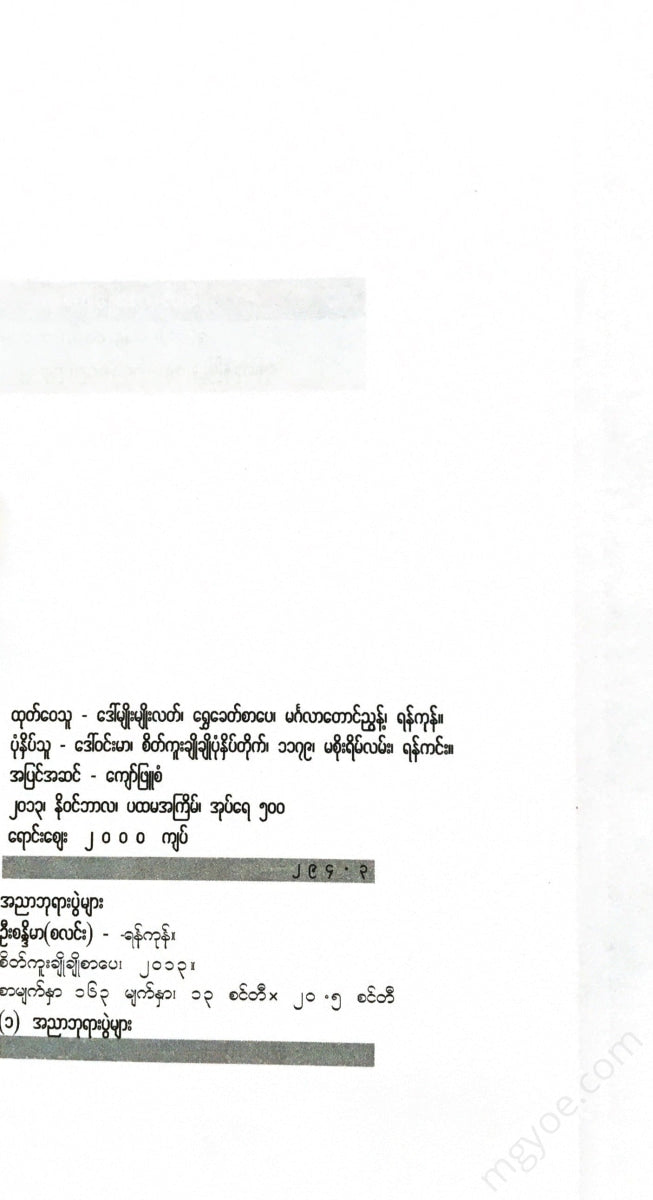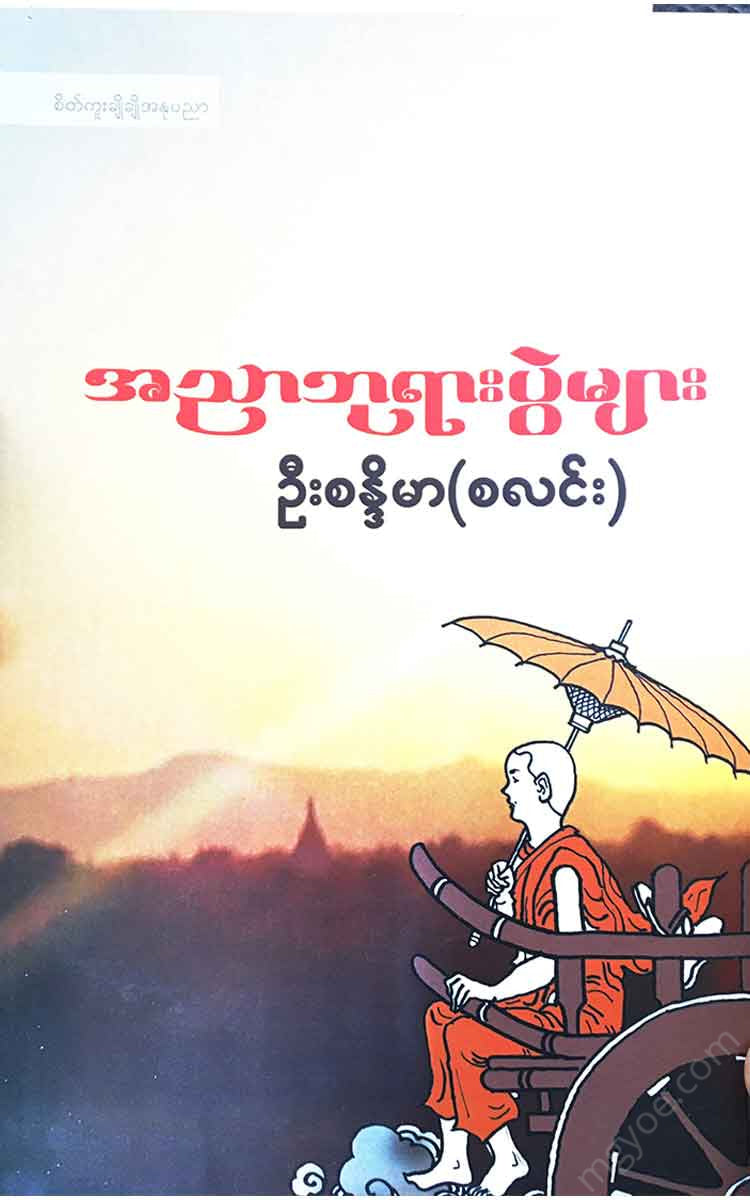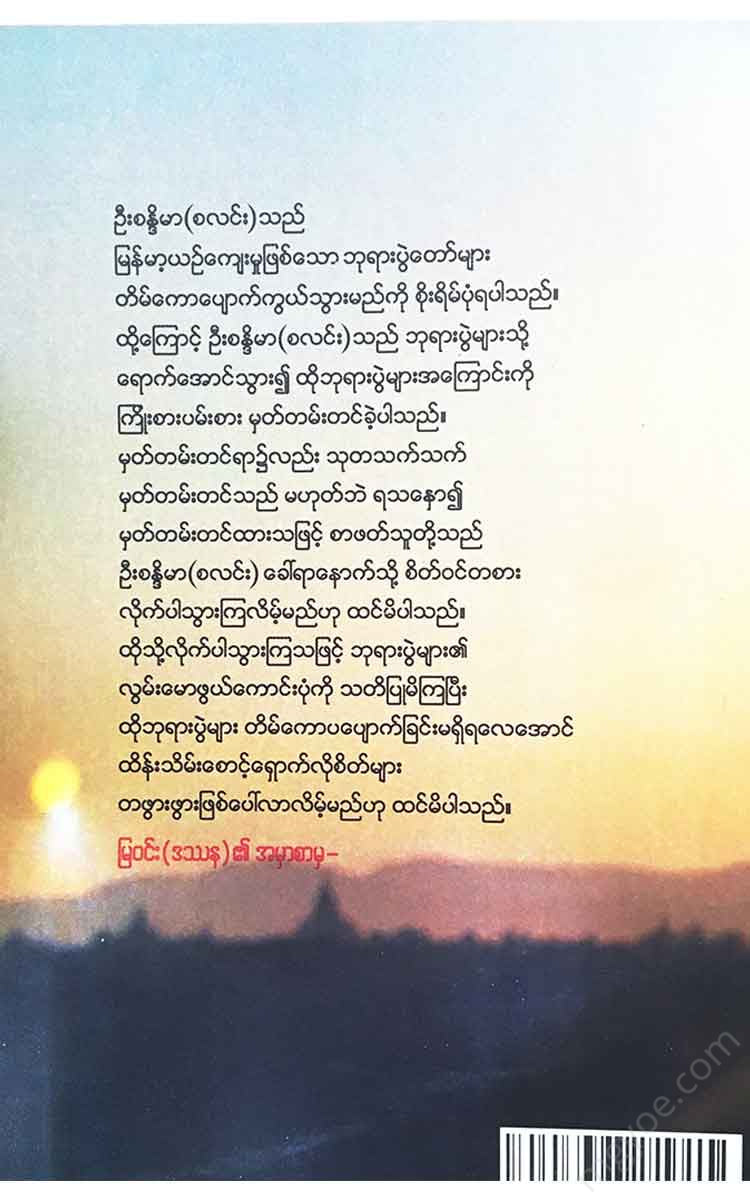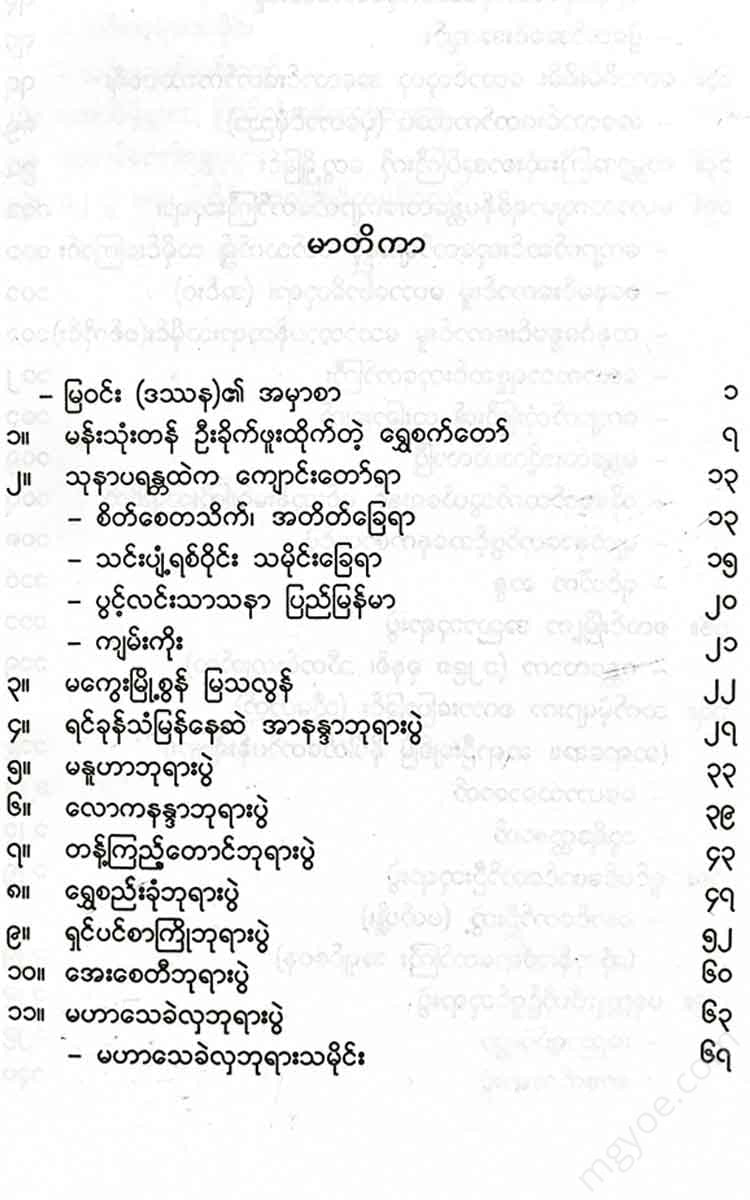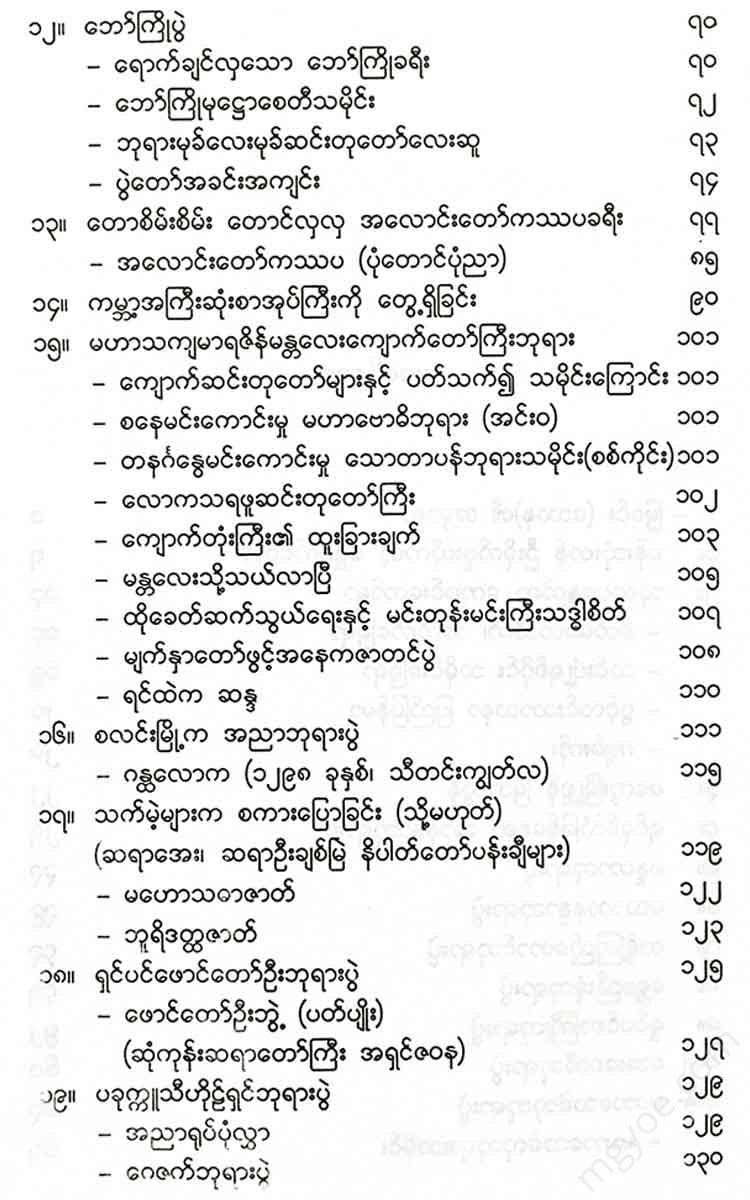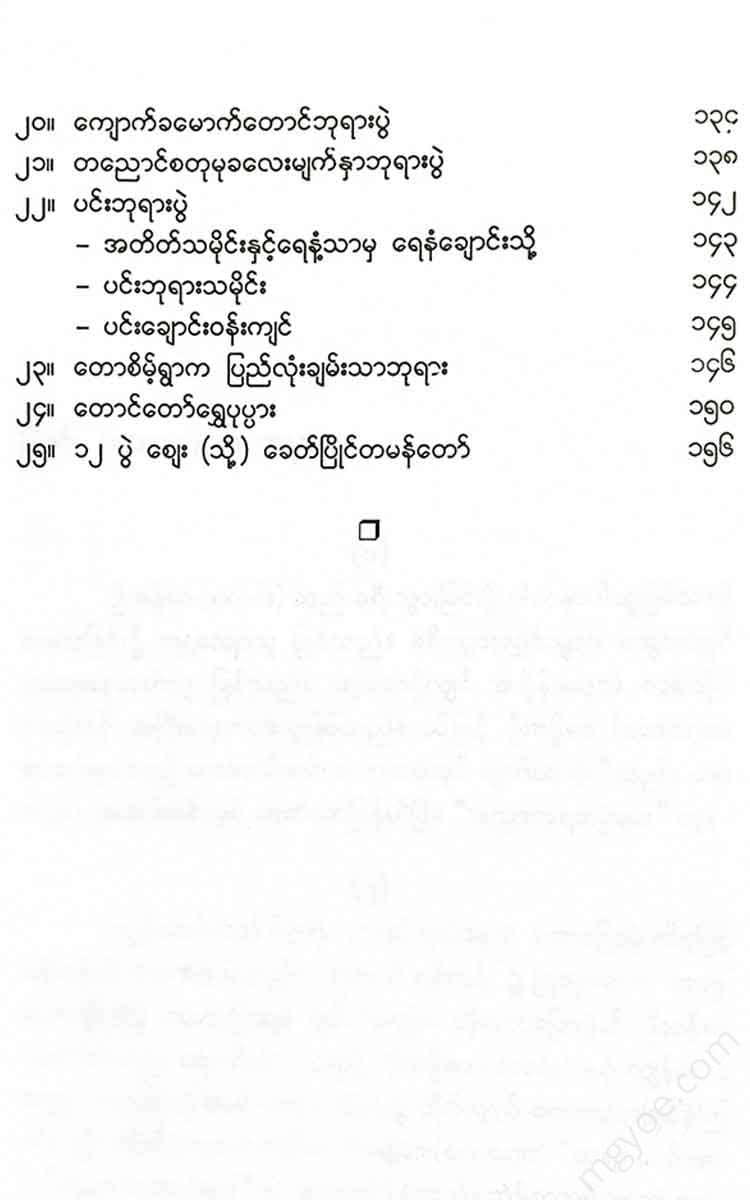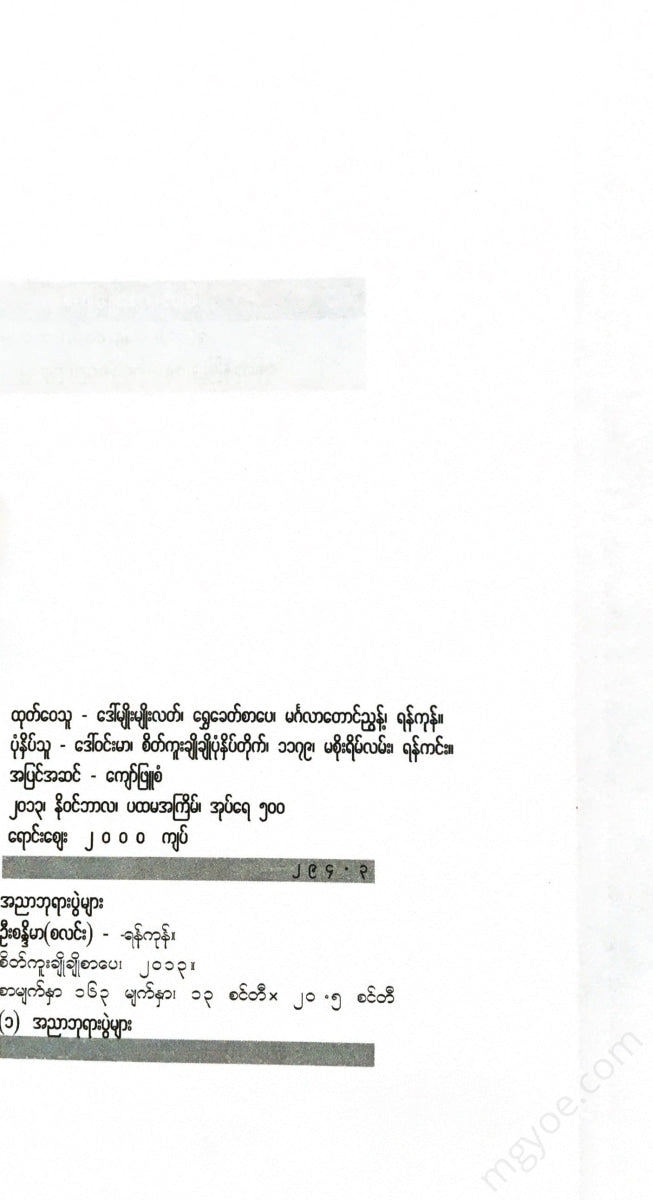စိတ်ကူးချိုချိုစာပေ
U Sandima (Salin) - Anya Pagoda Festivals
U Sandima (Salin) - Anya Pagoda Festivals
Couldn't load pickup availability
A golden device worthy of being struck by three thousand men.
I had the opportunity to bathe in the Mann Stream at Mann Shwe Set Taw. It was so delicious. It was cool and clear and made all the flowers bloom. The clear water of Mann Stream allowed me to see the rocks and fish in the stream clearly.
These are what make the mind clear and refreshing.
The meaning of Mann Chaung is explained in the history of the Golden Ring as follows.
"The people who come here are called Mann because they are pure and noble."
Namada -
“ It is called Namda, which means cool and clear, pure and pure, bringing love and blessings.” Namda was called a river in ancient times. Namda and Mannchaung are the same. Both are called the same. The meaning is touching and beautiful. The water of Mannchaung is very sweet. That is why the fish in Mannchaung are sweet and delicious. The fruit trees that drink Mannchaung water also have a sweet and sweet taste. Saku City is only 21 miles away from Mannchaung. The flow is close to the north of the city. The Saku rice that was drunk from Mannchaung water was consumed by ancient kings, and it was collected and stored. It was very famous. It was a high-quality rice and a high price. The author’s childhood was filled with Saku rice. I think it is more delicious, sweet, and soft than the current Po San Hmwe. Now, the Sukhothai rice has disappeared due to poor grain yield and the aging of the rice plants.
The Great Teacher, the Great Father, in his prayer poem, "The Great Four-Door Song" -
From the school's location, Mannyasaku
It is a meditation practice xxxxx
( Ame King) Nunu Phat Phat and “The two islands of the island
Although the Mann Chaung is an inanimate tree, it automatically increases in value when you touch the two sets of feet three times. Therefore, it will bring you various kinds of clear love. Therefore, it is called “a pagoda worthy of touching the three sets of feet” because of the uniqueness of the Golden Set Daw and the mysterious appearance of the Mann Chaung. The water of the Mann Chaung flowing from the west surrounds the foot of the Arahant’s feet and touches the upper Mann Chaung feet that touch the Mo Soo Taung Pagoda. It is called the first touch.
The winding Mann Chaung flows past the Mann Beach and from the Mann Beach it hits the upper and lower waterfalls. This is the second time it hits, and it enters the valley between the two waterfalls and returns to the boat dock. It hits the two waterfalls in the Thobo area for the third time. You can clearly see these three places from the upper waterfall. The view of Mann Chaung from near and far, winding
The uniqueness of Man Shwe Set Taw is the beauty of the pagodas, the beauty of the forest, the beauty of the mountains, the beauty of the streams, the natural water, the beauty of the trees, the beauty of the surrounding birds and animals.
People who have already been there want to come back to experience these beauties, and people who haven't been there yet want to come back through word of mouth. I want to experience these unique things when I arrive. If I ever get to Shwe Sek Taw, I want to study it without being indifferent.
Knowing these unique features will make the trip worthwhile and worth the money spent.
Another unique feature of the Mannchaung River is that the water is so hot that it makes you sick and sick. It is not like a heat stroke. Some pagoda festivals are expensive due to water shortages and high water prices, but at Shwe Set Taw, due to the favor of nature, there is no cost for bathing or drinking water, which is called Karohi. The festival lasts for three months. Every year, from the 5th day of the first lunar month to the 2nd day of the second lunar month. In Myanmar, there are no festivals and celebrations, except for the Kyaik Htee Yo Pagoda Festival and the Shwe Set Taw Pagoda Festival. It is amazing.
The Shwe Settaw Pagoda Festival begins in the month of Tapotwe, so it is the best time to travel because it is not too hot or too cold. Not to mention the crowds, it also coincides with the end of exams for students from primary to (9) grade. It also coincides with the end of exams for students from grade 10.
So, the Shwe Settaw Pagoda Festival has both winter and summer flavors. In the summer, it is an opportunity to bathe in the hot spring water without spending money. For food, there are large restaurants, snack shops, lotus root, noodles, pickled vegetables, tofu salad shops, and hand-carried salad vendors everywhere, so you can just eat with oil and salt. Fried rice, sticky rice, and fried meat can also be bought from the vendors in front of the temple. Various cold drinks and snacks are also available in the upper Settaw area.
They said they were in the wrong place.
There are many things to know about the Golden Temple. Some people ask, "Is the Buddha's footprint on the left or the right?" This is a question worth asking, and the answer is worth knowing.
The two feet of the Buddha are only the left foot. That is why it is said in the Samat Rajwin that “Jambu is a double, and the right foot is a double.” The upper foot was placed because the monk Sisabandara prayed, and the lower foot was placed because the king Namada prayed. The main places of worship are the Pwint Phyu Monastery, Minbu Sakinte Pagoda, and Magway Myathalon Pagoda, which are related to the Shwe Settaw. The Atthakatha explains a different principle.
History is a lie, if you deny it, there are things to deny. Research is best done with all your might. Dwtbaung also visited the two hundred feet of the Golden Buddha. During the reign of the second king of Inwa, the poet Maharatthasara visited and wrote and presented the "Golden Buddha's Footsteps" and became more famous. For 127 years, starting from the reign of Tho Hanbwa, the two hundred feet of the Golden Buddha were covered with bushes and disappeared. In the reign of King Thalun in 996, the monk Salin Thar Taung Phila, according to the Atthakatha scriptures, was able to find the two hundred feet of the Golden Buddha with 12 monks including Ananthaja Sayadaw, Ariyalankara Sayadaw, and Tilokalankara Sayadaw. When the Buddha Supan Taungphila Sayadaw covered the Buddha's footprints with a double-layered robe and vowed to show a special sign if he truly became a Buddha, the robe rose up in the shape of a crane, signifying that the rope would be pulled tight.
Thanks to the Taung Phila Sayadaw, the young people of today can easily see the two hundred and sixty-six steps. Then, thanks to the hermit U Khanti who repaired the pagoda and the local monks and benefactors. No matter how much water flows during the rainy season, the water does not reach the lower Sakya Taw. There are 528 steps to the upper Sakya Taw. The 528 steps symbolizing love are both refreshing and easy to remember. The Shwe Sakya Taw, which is worth three tons of money, is known to everyone who has visited it, making everyone who comes feel cool and clear. The Shwe Sakya Taw area is in the same district as where the writers live, so I am especially proud and satisfied. There is another line.
A region may want to be "sha". It may want to be "forest".
It may be a “valley.” It may be a “hill.” However, if it is true that the place where the saints live is the most delightful place outside the world. (Dhammapada 98) As it is said, the Shwe Settaw area, where the temple and monks are located, is one of the most delightful places.
Gambira Magazine, February 2009

